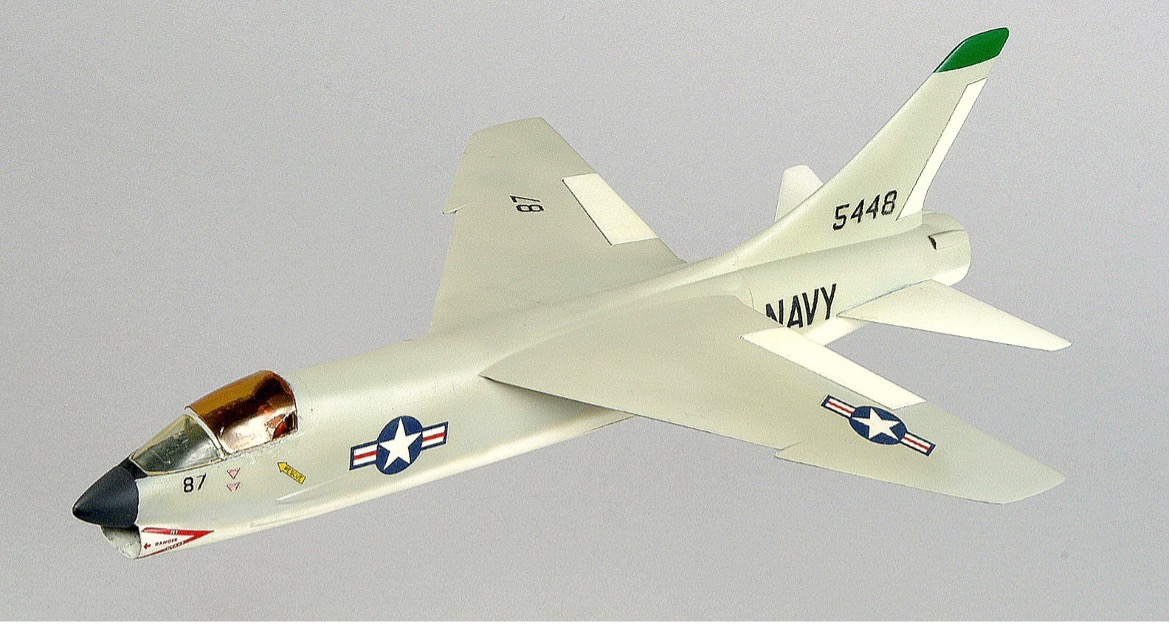USN NASWF Vought F8U/F-8 Crusader

MODEL BY:
LTV & H. Davidson
Model Scale:
1/48
MODEL ADDED:
11/05/1965
historical significance
First Albuquerque Visit: 1958
Additional Information:
The Vought F-8 Crusader (originally F8U) is a single-engine, supersonic, carrier-based air superiority jet aircraft. It was the last American fighter that had guns as the primary weapon, earning it the title “The Last of the Gunfighters”. Flight testing proved the aircraft to be relatively problem-free. On 21 August 1956, the F-8 became the first jet fighter in American service to reach a top speed over 1,000 mph. During March 1957, the F-8 was introduced into regular operations with the US Navy. American F-8s saw active combat during the Vietnam War, engaging in multiple dogfights with MiG-17s as well as performing ground attack missions in the theatre.
Albuquerque’s Kirtland Field was designated Kirtland Air Force Base in 1947, and the Armed Forces Special Weapons Project (AFSWP) operated on Sandia Base. When the United States Air Force established the Air Force Special Weapons Command at Kirtland Air Force Base in 1949, the United States Navy formed a detachment to investigate nuclear capabilities for naval aircraft and assist the AFSWP with naval equipment for demonstrations and training. The Naval Weapons Evaluation Facility (NWEF) operated through the Cold War investigating aircraft-weapon interfaces to provide United States Navy aircraft with nuclear weapons delivery capability.
In 1952 this detachment was designated the Naval Air Special Weapons Facility (NASWF) to conduct special weapons tests on the White Sands Missile Range and Tonopah Test Range in coordination with the United States Atomic Energy Commission. In March of 1961, the NASWF was re-designated the Naval Weapons Evaluation Facility (NWEF) and its mission was expanded to include safety studies on nuclear weapons. The aircraft used for NWEF testing were decorated with the NWEF thunderbird symbol and the NWEF detachment became known as the Rio Grande Navy by its sailors and civilians.
In 1992, with the consolidation of many naval activities and the drawdown of the U.S. defense budget, NWEF became part of the large, multisite Naval Air Warfare Center Weapons Division in China Lake. In 1993 the NWEF was decommissioned and became the first nuclear-weapons-related facility in the Free World to be shut down. As NWEF closed, it transferred some of its remaining people and functions to the China Lake site.
The Naval Air Special Weapons Facility (NASWF), based at Kirtland Air Force Base in Albuquerque, New Mexico, conducted weapons separation tests at Holloman AFB and the White Sands Missile Range (WSMR) in 1958 with the Vought F-8 Crusader using aircraft Bu No. 145448 and 128465.
GALLERY:
SEARCH OUR DATABASE:
